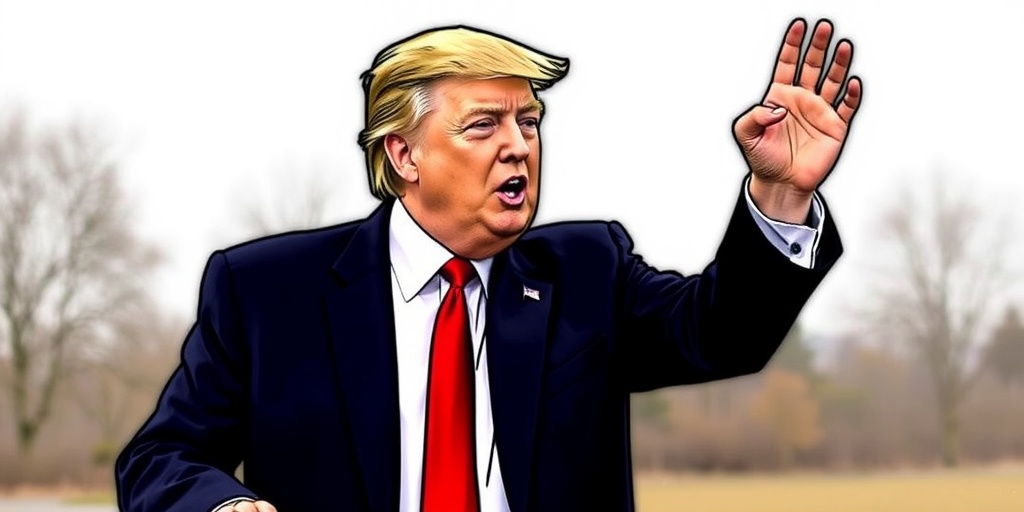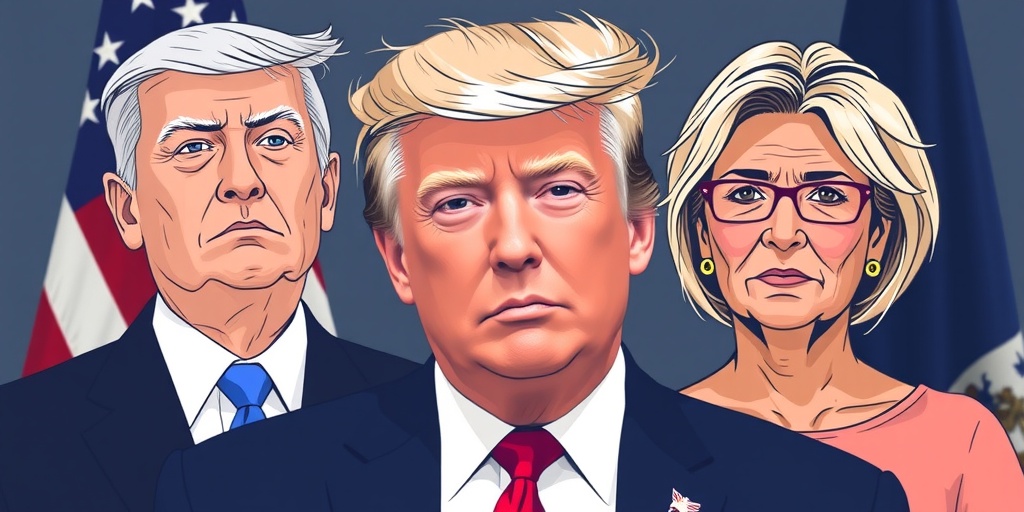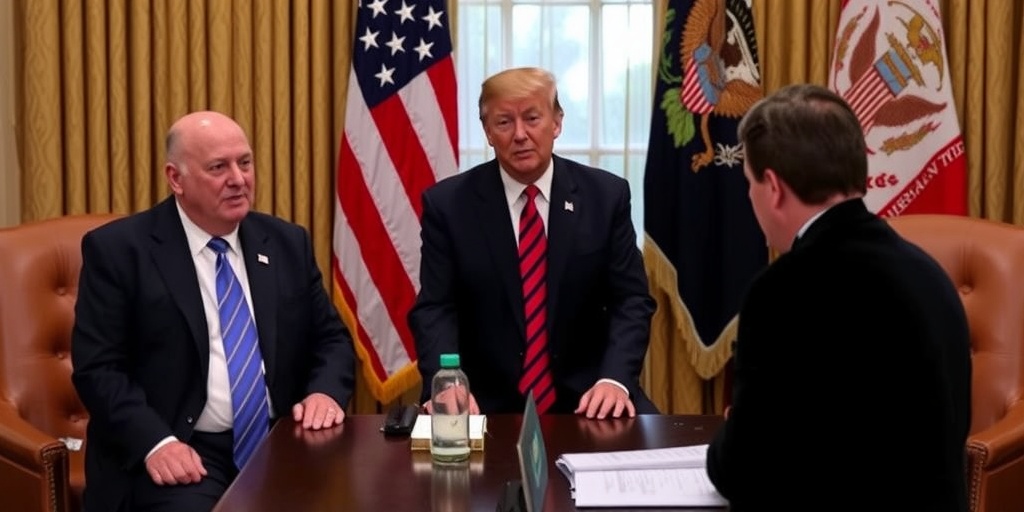Now Reading: Trump’s Contradictions Serve as His Best Shield
-
01
Trump’s Contradictions Serve as His Best Shield
Trump’s Contradictions Serve as His Best Shield

What Does President Trump Really Believe? A Look at His Inconsistent Rhetoric
As former President Donald Trump returns to the political scene, questions about his true beliefs and intentions have become more pronounced than ever. His recent actions and statements have led to a whirlwind of speculation: Does he genuinely aspire to a third term in office, or is it merely a facetious remark? Is there a serious plan to seize control of Gaza and displace millions of Palestinians, or is that proposal simply hyperbole? Opinions on the value of Black History Month have also been muddled—does he see it as a waste, or does he consider it worthy of grand celebration at the White House?
For those seeking clear answers, the task proves challenging. Since reclaiming the presidency, Trump has adopted a perplexing communication strategy that involves shifting positions rapidly and frequently. This approach has left many Americans grappling with contrasting narratives regarding his intentions and priorities. The President’s self-contradictory statements provide fertile ground for supporters and detractors alike to interpret his words in ways that align with their views.
Historically, Trump has been known for utilizing distortions and inaccuracies, a trend that continued into his latest term. However, as he pursues an aggressive agenda at both domestic and international levels, his contradictory claims have grown increasingly bold and conspicuous. According to Julian E. Zelizer, a history professor at Princeton, the aim behind Trump’s rhetoric may not lie in asserting logical consistency but rather in creating a veil of plausible deniability.
“The reality of our modern information world is that you can pick and choose what you want to believe,” Zelizer remarked, emphasizing that Trump is well aware of this phenomenon. This bifurcation in messaging has enabled followers to latch onto narratives that reinforce their support for the President, while critics may seize upon the contradictions to illustrate his unreliability.
Just hours after taking office, Trump initiated controversies by pardoning some of the individuals involved in the January 6 insurrection. This act sharply juxtaposes his professed support for law enforcement, leaving many to question the integrity of his commitment to uphold the rule of law. Furthermore, his administration has attacked diversity, equity, and inclusion policies, branding them as “harmful.” Yet, in the wake of a tragic plane crash linked to these very policies, he quickly retracted his disparaging statements, asserting, “We want the most competent people. We don’t care what race they are.”
Trump’s mixed messaging extends to pivotal moments in his foreign policy as well. A notable example arose with his controversial announcement about U.S. intentions to seize the Gaza Strip and displace its Palestinian residents. Initially, he described this ambitious plan in grandiose terms, envisioning a reimagined Gaza as the “Riviera of the Middle East.” However, within a span of two weeks, he revised his statements multiple times, eventually downplaying the initiative as merely a “recommendation.”
Meanwhile, Trump’s rhetoric surrounding Greenland, where he ambiguously stated that he “invited” the territory to choose to align with the United States, soon turned aggressive when he proclaimed, “One way or the other, we’re going to get it.” On the matter of Ukraine, his social media post labeling President Volodymyr Zelensky as a “dictator without elections” raised eyebrows. When confronted about this characterization, Trump appeared to be caught off guard, relaying his disbelief at having made such a statement.
Despite the confusion, some White House officials argue that Trump’s shifting stance is indicative of his negotiation style, which they believe reflects adaptability in complex geopolitical situations. One aide, speaking anonymously, suggested that the ambiguity in Trump’s comments on foreign affairs could actually facilitate progress toward peace.
White House press secretary Karoline Leavitt defended Trump’s approach, citing his consistent accessibility and transparency as a leader. She asserted that Americans appreciate "the beauty of the art of the deal" that Trump embodies. For many, however, this ongoing inconsistency raises significant concerns about the impact on public discourse and collective decision-making in a democratic society.
Experts warn that Trump’s penchant for contradiction may precipitate serious risks. Yale professor Jason Stanley posits that undermining consistent messaging erodes the shared understanding essential for democracy. Without a common baseline for reality, the ability to make informed choices diminishes, potentially paving the way for a single puppet master—the “disrupter in chief.”
Ultimately, Trump’s tendency to contradict himself signals a troubling truth. As Stanley concludes, "If you’re constantly contradicting yourself, you’re constantly lying." The implications of this behavior extend far beyond the immediate political arena, potentially shaping the fabric of American democracy for years to come.
Stay Informed With the Latest & Most Important News
Previous Post
Next Post
-
 01New technology breakthrough has everyone talking right now
01New technology breakthrough has everyone talking right now -
 02Unbelievable life hack everyone needs to try today
02Unbelievable life hack everyone needs to try today -
 03Fascinating discovery found buried deep beneath the ocean
03Fascinating discovery found buried deep beneath the ocean -
 04Man invents genius device that solves everyday problems
04Man invents genius device that solves everyday problems -
 05Shocking discovery that changes what we know forever
05Shocking discovery that changes what we know forever -
 06Internet goes wild over celebrity’s unexpected fashion choice
06Internet goes wild over celebrity’s unexpected fashion choice -
 07Rare animal sighting stuns scientists and wildlife lovers
07Rare animal sighting stuns scientists and wildlife lovers




















